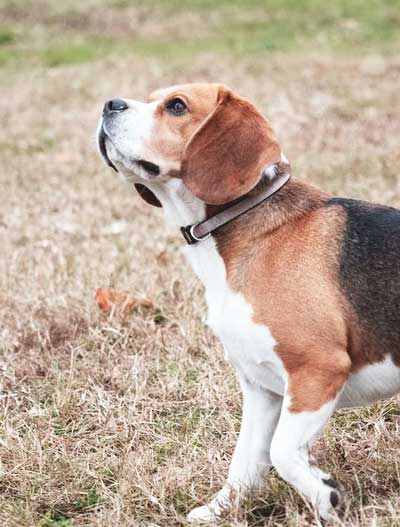It’s no secret that pesticides are harmful to our environment and can be deadly for animals, including dogs. If your dog has been in a grassy area where there is pesticide present, you may be concerned about their safety. Dogs love to urinate on grass lawns of your home. The good news is that most products labelled as “dog-friendly” will not harm your pet if they come into contact with the chemical. However, it’s important to understand how different types of pesticides affect dogs so you can make sure your furry friend stays safe while enjoying time outdoors. In this blog post, we’ll discuss the potential risks of pesticides on dogs and provide tips on how you can keep them protected from these hazardous chemicals. So even if you ask, “Is it ok if my dog walked on grass with pesticide?” you will be well informed about how to keep your pet safe.
When it comes to pesticides, there are two main categories: contact and systemic. Contact pesticides are designed to kill or repel pests when they come into direct contact with the chemical. These products generally contain active ingredients like pyrethroids that can be absorbed through a dog’s skin, eyes, or mouth. Systemic pesticides, on the other hand, are designed to be taken up by plants and released over time into their environment. These products contain active ingredients such as neonicotinoids that can be ingested when dogs eat or drink from contaminated sources.

Can grass pesticides make dogs sick if they walked on the grass?
It is important for dog owners to understand the risks associated with contact and systemic pesticides. Contact pesticides can cause skin and eye irritation, as well as respiratory issues after walking. Read the label carefully before using any pesticide on your grass lawn or garden.
To keep your pet safe from pesticides, it is best to avoid using any chemical product near areas where your dog spends time and walks. When applying the product, be sure to read and follow all instructions and warnings, and keep your dog out of the area until the application has dried on the grass. Additionally, you should always wash your pet’s paws after they have been in any area that may be contaminated with pesticides.
The bottom line is that it is never a good idea to let your pet walk on grass with pesticide present. While most pet-safe products will not hurt your dog if they come into contact with them, it is still important to be aware of the potential risks and take steps to protect your pet from these hazardous chemicals. By following these tips, you can keep your furry friend safe while enjoying time outdoors.
My dog walked on grass with Roundup – should I worry?
No matter what type of pesticide you are using, it is important to follow the instructions closely and keep your dog out of the area until the application has dried. Although most pet-safe products will not be hazardous to your dog if they come into contact with them, some systemic pesticides may cause organ damage or neurological problems if ingested. Additionally, certain products labelled as “pet-safe” may still cause skin and eye irritation.
For these reasons, it is best to avoid allowing your pet to walk on grass with pesticide present whenever possible. If you must apply a pesticide in an area where your dog spends time, make sure to choose one labelled as “pet-safe”.
Symptoms of Insecticide Poisoning in Dogs
If your pet has been exposed to a pesticide, it is important to watch for signs of insecticide poisoning after your dog walked on grass with pesticide. Common symptoms may include vomiting, diarrhoea, loss of coordination, facial swelling, difficulty breathing, and seizures. If you notice any of these symptoms in your pet after they have come in contact with pesticides, seek veterinary care immediately. It is also a good idea to take the product container with you to the vet, so they can identify the active ingredients and determine the best course of treatment.
Taking these precautions can help ensure that your pet remains safe and healthy while enjoying time outdoors. By following these tips, you can keep your beloved canine companion safe from hazardous pesticides.

How soon will a dog show signs of pesticide poisoning?
It can take anywhere from a few hours to several weeks for symptoms of insecticide or pesticide poisoning to appear in dogs after they walked on the grass. The severity and duration of the symptoms will depend on the type and amount of pesticide that was ingested and how long they walked on the grass for. If your pet has been exposed to a pesticide, it is important to watch for signs of poisoning and seek veterinary care immediately.
Does milk help a poisoned dog?
Milk may help to reduce some of the symptoms associated with pesticide poisoning in dogs, such as nausea and vomiting. However, it is important to note that milk should not be used as a substitute for veterinary care – if your pet has been exposed to a pesticide, seek medical attention immediately. Additionally, depending on the type of pesticide ingested, the vet may need to administer an antidote in order to treat your pet’s poisoning. Therefore, it is best not to delay veterinary treatment if you suspect that your dog has been poisoned.
Can a dog die from pesticide poisoning?
Yes, dogs can die from pesticide poisoning if they are exposed to high amounts of these hazardous chemicals when walking. In severe cases, pesticide poisoning can cause organ damage and even death. There have been stories of Trugreen killing dogs, to name one brand. Other people have had concerns about pesticides on lawns and public grass areas too. To prevent this from happening to your pet, it is important to keep them away from areas where pesticides are present and seek veterinary care immediately if you suspect that they have been exposed. By taking these precautions, you can help ensure that your canine companion remains safe.
Is glyphosate harmful to dogs?
Yes, in some cases, ingestion of glyphosate can cause gastrointestinal upset, diarrhoea and vomiting in dogs. Glyphosate is a systemic pesticide used to control weeds and grass. Although there are no definitive studies that have found glyphosate to be toxic to dogs, it is important to keep your pet away from areas where this pesticide has been applied until the application has dried. This is because some dog owners have had issues.
Additionally, if you suspect that your dog has ingested glyphosate, seek veterinary care immediately. If left untreated, these symptoms can lead to more serious health complications such as organ damage or even death. For this reason, if you suspect that your pet has been exposed to glyphosate, it is best to seek veterinary treatment as soon as possible.
In conclusion, it is clear that pesticides can be very dangerous for dogs. So if your dog walked on grass with pesticide, you should know what to do. Even with protective measures such as wearing a muzzle or keeping them away from areas where pesticides have been applied, there is still the potential for exposure and poisoning. If you suspect that your pet has consumed any form of pesticide, seek veterinary care immediately in order to ensure their safety and prevent further complications.
Additionally, consider natural alternatives to chemical lawn treatments if possible. With these precautions in place, you can help keep your canine companion safe while they enjoy time outdoors!